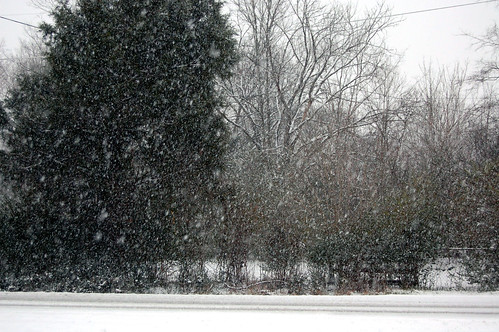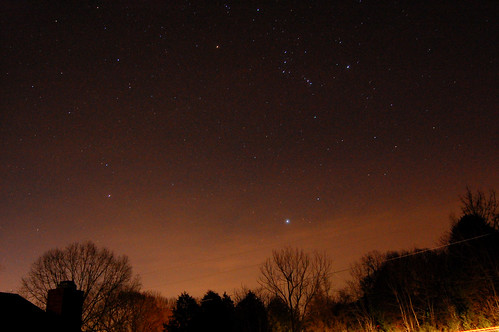.jpg)
Although I exhibit many of the typical traits of an obsessive record collector, making lists is not one of them. Sure, I’ve been known to make lists – I do post my playlist for the past week every Saturday evening -- but only because a friend suggested I do so. Long ago, I kept a computerized list of my entire record collection, but the DOS-based software was one the few genuine casualties of Y2K and ever since, I have been a lousy record-keeper. It took some effort just to figure out what I bought this calendar year, much less when it was actually released. Furthermore, I am becoming increasingly fuddy-duddy in my record purchases, allocating large sums to re-issues (photograph) and very little to “new” music. So, it seems pointless to make any kind of “best of” list, since pretty much anything I buy, I know in advance that I will at least like, if not love. I didn’t used to be this way and I am always interested in hearing new music, but with the exorbitant cost of a typical CD, unless a trusted friend recommends something, I am reluctant to take a chance. Even with that, there are way more records released in a year that I would absolutely love to have than I can possibly afford to buy, believe me. So, here’s a review of what I deemed worthy of my meager but well-earned dollars in 2009. (All titles are compact discs unless otherwise noted.)
“Classical” (new):
* G.F. Handel:
12 Solo Sonatas, Op.1 (AAM/Egarr) (Harmonia Mundi)
* G.F. Handel:
Trio Sonatas, Op.2 & Op.5 (AAM/Egarr) (Harmonia Mundi)
* G.F. Handel:
Organ Concertos, Op.7 (AAM/Egarr) (Harmonia Mundi hybrid-SACD)
The Academy of Ancient Music completed their Handel survey on Harmonia Mundi with a flourish, releasing not one, not two, but three double-disc releases this year alone. Egarr’s scholarship and sheer love of this repertoire is clearly evident throughout. This is Historically-Informed Performance (HIP) at its finest, but Egarr is not afraid to avail himself to modern technology, utilizing overdubbing to realize the bass-pedal parts on the Organ Concerto, Op.7, No.1 (or duetting with himself on Bach’s 14 Canons, BWV 1087, as found on his superb recording of the
Goldberg Variations). Handel was no Bach, but rather seeks to please -- and he does here, beautifully. Otherwise, my resources were expended collecting the discographies of some other HIP practitioners: The Venice Baroque Orchestra led by harpsichordist Andrea Marcon, and the violinists, Giuliano Carmignola and John Holloway. The VBO with Carmignola have a new disc of obscure 18th-Century concertos on Archiv Produktion entitled,
Concerto Italiano, but I haven’t picked it up yet; I’m sure it’s a ripping good time!
“Classical” (reissues/historical):* Elliott Carter:
A Nonesuch Retrospective (Nonesuch)
Several of Elliott Carter’s major compositions were first recorded for Nonesuch in the 1970s, and are gathered together here in this budget-priced
Retrospective (which also includes the landmark Variations for Orchestra, which was first recorded for Deutsche Grammophone). This is prickly high-modernism at its most difficult, yet Carter’s early infatuation with post-Romantic neo-classicism imbues these works with a workmanlike concern for craft and internal cohesiveness, making even his most complex ideas crystal clear through his expert handling of the musical texture. Still composing at the astonishingly ripe old age of 101, Carter’s music has perhaps moved from cutting-edge to old hat, but his best works are still enormously challenging and reward close listening. The recordings contained on this box set are come of the towering achievements of post-war music and belong in every serious record collection.
“Jazz” (new):* Evan Parker Electro-Acoustic Ensemble:
The Moment’s Energy (ECM)
* Henry Threadgill’s Zooid:
This Brings Us To, Vol.1 (Pi)
* David S. Ware:
Shakti (AUM Fidelity)
* Matthew Shipp Trio:
Harmonic Disorder (Thirsty Ear)
* Mary Halvorson/Reuben Radding/Nate Wooley:
Crackleknob (hatOLOGY)
* Mary Halvorson & Jessica Pavone:
(Thin Air) (Thirsty Ear)
* The Thirteenth Assembly:
(un)sentimental (Important)
Although recorded back in 2007, Evan Parker’s latest Electro-Acoustic Ensemble disc was released just this year and it might be my favorite of their five (uniformly excellent) albums on ECM. Henry Threadgill’s first new album in ages shows the tremendous growth in Zooid’s musical conception over these past many years. My only complaint is the CD is too short at thirty-nine minutes. So, where is
Volume 2?!? David S. Ware’s new quartet with guitarist Joe Morris moves in a more spacious, lyrical direction and their album on AUM Fidelity has gotten a lot of play in our house. Fortunately, Ware has recovered from kidney-transplant surgery and has recently returned to music-making after a long absence.
Hooray! Former Ware band-mate, Matthew Shipp, continues to make fine records and his new one on Thirsty Ear with Morris on bass and fellow NEC-alum Whit Dickey on drums is almost a classic jazz piano session, with Shipp sounding more and more like post-modern Thelonious Monk. Good stuff. Then there is the cadre of gifted young musicians coming out of Anthony Braxton’s ensembles, in particular Mary Halvorson, Jessica Pavone, and Taylor Ho Bynum. These musicians are making some of the most inspiring music on the planet! Halvorson re-invents “jazz” guitar while being unafraid to show her Hendrixian roots. Her duets with violist Pavone combine their plaintive voices with their delicately balanced stringed instruments for a unique, almost Canterbury-ian art-folk sound. Beautiful stuff. They join forces with cornettist Bynum and drummer Tomas Fujiwara as The Thirteenth Assembly, and make joyously eclectic, collectively conceived music. I’m interested to hear what they all do next. (Bynum has a new CD out on Firehouse 12 featuring his Spider Monkey Strings ensemble, but I do not have it – yet.)
“Jazz” (reissues/historical):* John Coltrane:
Side Steps (Prestige)
* Anthony Braxton:
The Complete Arista Recordings (Mosaic)
* Anthony Braxton:
Seven Compositions (Trio) 1989 (hatOLOGY)
*
Sun Ra Featuring Pharoah Sanders & Black Harold (ESP-Disk’)
* Sun Ra:
Horizon (Art Yard)
* Sun Ra:
Nidhamu + Dark Myth Equation Visitation (Art Yard)
* Sun Ra:
Antique Blacks (Art Yard) **
* Sun Ra:
Disco 3000 (Saturn edit) (Art Yard) **
* Ronnie Boykins:
The Will Come, Is Now (ESP-Disk’)
Prestige has now completed their three-box-set remastering of Coltrane’s output for the label with this collection of further sideman dates. The ensembles are sometimes a bit dodgy (and at other times quite satisfying), but the man himself sounds brilliant. Mosaic continues to do what it does best, compiling criminally overlooked work in lovingly produced, limited edition box sets with their Anthony Braxton on Arista set. This stuff has been tragically out of print since its initial release in the mid-to-late-1970s and is essential documentation of this too-neglected genius. The 1989 set on hatOLOGY presents a short-lived trio with Adelhard Roidinger and Tony Oxley that mixes Braxton’s abstract compositions with “All the Things You Are” and a Tony Oxley original, “The Angular Apron,” to good effect. Lots of choice Sun Ra material has been reissued this past year, beginning with ESP-Disk’s expanded edition of
Featuring Pharoah Sanders and Black Harold while Art Yard continues to re-release rare Sun Ra albums previously available only on the super-obscure Saturn label.
Horizon and
Nidhamu + Dark Myth Equation collect all of the music recorded on their 1971 trip to Egypt.
Antique Blacks resurrects a studio album from 1974 while the reissue of the original
Disco 3000 album supplants the now out-of-print two-disc
Complete Disco 3000 Concert. **NB: I do not have these yet! Atavistic was scheduled to reissue the excellent 1970 album,
Continuation, but for whatever reason, it did not happen. Finally, seminal Sun Ra bassist Ronnie Boykins’s one and only solo album from 1975 was a welcome reissue on ESP-Disk’, even if the music is less adventurous than one might expect given the provenance. It is still a very enjoyable listen. No doubt that there many, many other great jazz reissues out there that I wish I had, but I can’t keep up!
“Rock & Pop” (new):* Bob Dylan:
Together Through Life (Columbia)
* Sonic Youth:
The Eternal (Matador)
* Yo La Tengo:
Popular Songs (Matador)
* The Flaming Lips:
Embryonic (Warner Bros.)
* Wilco:
Wilco (the album) (Nonesuch)
* Wilco:
Ashes of American Flags (Nonesuch DVD)
* Tortoise:
Beacons of Ancestorship (Thrill Jockey)
* Jim O’Rourke:
The Visitor (Drag City)
* DJ Spooky:
The Secret Song (Thirsty Ear)
A whole bunch of my favorite artists released new albums in 2009, so these were no-brainer, must-have items. But more than anything, it also demonstrates my fusty old tastes in a big way! Oh well…getting old sure bats the alternative! Bob Dylan’s millionth album is better than anyone should ever expect, but ultimately pretty lightweight – which actually comes as something of a relief after the heaviness of his last few records. (I took a pass on the Christmas album – although the video for “Must Be Santa” has me intrigued. I might have to pick up the LP.) Sonic Youth’s
The Eternal prompted a three thousand word blog post that never got posted (it turned out to be way too confessional for public consumption). Who knew in 1984 that Sonic Youth would become Sonic Fogeys, still banging out punk rock with their integrity and musicianship intact? Not me! Or that the ramshackle Flaming Lips would one day make the most ambitious, post-Beach Boys orchestral pop music imaginable – and then, after all that, turn around and create a totally weirded-out, psycho-paranoid audio art piece? Not me! Then there’s Yo La Tengo, who have been around almost as long as Sonic Youth, making every album a minor masterpiece only to release a sprawling magnum opus that might just be their best yet. Wow, it just makes me proud! Then there’s the new Wilco album which is solid enough, but live is still where they’re at -- see the
Ashes of American Flags DVD for further evidence. Sonic Youth (and Wilco) alum Jim O’Rourke resurfaced from self-imposed Japanese exile to make hermetic solo album of instrumental gorgeousness. Then there’s Tortoise, who almost single-handedly resurrected “fusion” as a legitimate prospect over a sixteen-year career, now capped with a great new album. And speaking of fusion, DJ Spooky’s hip-hop-jazz-rock hybrid is at its most compelling on
The Secret Song, complete with surprisingly successful instrumental covers of two Led Zeppelin songs. Now, I keep hearing about Animal Collective’s
Merriwether Post Pavillion; it’s supposed be like some sort of post-Radiohead rock. Sounds like something I might like; I need to investigate in 2010.
Robert Pollard:* Robert Pollard:
The Crawling Distance (GBV, Inc.)
* Robert Pollard:
Elephant Jokes (GBV, Inc.)
* Boston Spaceships:
The Planets Are Blasted (GBV, Inc.)
* Boston Spaceships:
Zero to 99 (GBV, Inc.)
* Boston Spaceships:
Licking Stamps and Drinking Shitty Coffee (APC 2LP)
* Circus Devils:
Gringo (Happy Jack Rock Records)
* Cosmos:
Jar of Jam, Ton of Bricks (Happy Jack Rock Records)
* Guided By Voices:
Suitcase 3: Up We Go Now (GBV, Inc.)
* Guided By Voices:
Briefcase 3: Cuddling Bozo’s Octopus (GBV, Inc.)
Pollard, of course, gets his own category since I am a helplessly committed fan; I buy it all and he makes
a lot of records. Is it all totally great, best-of material? Of course not. Even so, Pollard’s genius always amazes me with its insanely fertile profligacy.
The Crawling Distance is worth it just for the gorgeous re-make of “It’s Easy” while
Elephant Jokes finds Pollard strapping on a guitar and reviving the two-minute GBV-style rave-ups of yore. Boston Spaceships inspires with its hard-rocking intensity and it’s refreshing to hear Pollard interacting with a real band (of sorts), especially on the “official bootleg” documenting a show from the 2008 min-tour. Then there’s the music-by-mail-project with Richard Davies (Cosmos), which kind of left me cold; but the latest Circus Devils album is a real stunner and a surprisingly accessible introduction to Pollard’s most severely psych-damaged side project. Finally, yet another
Suitcase box set presents another embarrassment of riches: one hundred songs at a bargain-basement price – you can’t lose! Meanwhile, the limited edition LP attempts to summarize it all in forty-five minutes or less.
Whew! In all, it was another banner year for Mr. Pollard and 2010 looks to continue the pace: another solo album,
We All Got Out of the Army, will be out next month and a new Circus Devils record,
Mother Skinny, is due in April. I can’t wait!
“Rock & Pop” (reissues/historical):* Jerry Lee Lewis:
Original Sun Singles ’56-’60 (Sundazed 2LP)
*
The Beatles In Mono (Apple/EMI)
*
The Beatles In Stereo (Apple/EMI)
* Big Star:
Keep An Eye on the Sky (Rhino)
* Big Star:
#1 Record (Classic LP)
* Big Star:
Radio City (Classic LP)
* Chris Bell:
I Am the Cosmos (Deluxe Edition) (Rhino Handmade)
* Van Morrison:
Astral Weeks (Warner Bros. LP)
* Van Morrison:
Moondance (Warner Bros. LP)
* Grateful Dead:
To Terrapin: Hartford ’77 (GD/Rhino)
* Grateful Dead:
Winterland June 1977: The Complete Recordings (GD/Rhino)
* Grateful Dead:
Road Trips, Vol.2, No.2: Carousel 2-14-68 (GD/Rhino)
* Grateful Dead:
Road Trips, Vol.2, No.3: Wall of Sound (June 1974) (GD/Rhino)
* Grateful Dead:
Road Trips, Vol.2, No.4: Cal Expo ’93 (GD/Rhino)
* Grateful Dead:
Road Trips, Vol.3, No.1: Oakland 12-28-79 (GD/Rhino)
* Rickie Lee Jones:
Pirates (Mobile Fidelity hybrid-SACD)
* Beck:
Sea Change (Mobile Fidelity CD/2LP)
Sundazed’s 2-LP set of Jerry Lee Lewis’s Sun singles is a thing of all-analog beauty and an excellent overview “The Killer’s” most rockin’ sides (and it’s super-reasonably priced to boot).
Essential! But the big kahuna this year has to be the Beatles boxes. They are certainly a considerable investment in these uncertain economic times, but this project is at least a decade overdue and, thankfully, they did a magnificent job. The mono mixes (only available in the limited edition box set) are a nice treat for hardcore fans (and for anyone who wants to hear the music as the Beatles themselves intended it to sound), but the stereo remasters are (for the most part) truly revelatory. Needless to say, I’m super-excited to have both. But you know what got me even more excited this year?
Big Star-mania! The retrospective four-CD box on Rhino, the audiophile vinyl reissues of their first two albums on Classic and the two-disc Chris Bell set on Rhino Handmade are all phenomenal. This is such great music, easily equal to the Beatles at their best! For that matter, it was a stupendous surprise to finally see the all-analog Van Morrison LPs released after a long, inexplicable delay and they do sound fantastic --especially the spectral
Astral Weeks. And speaking of good sound, Mobile Fidelity’s remastering of Beck’s emotionally wrenching (but musically captivating)
Sea Change is exquisite on gold CD but absolutely mind-blowing on vinyl. If you love this album as much as I do, you owe yourself the pleasure of hearing MoFi’s definitive edition(s). On the other hand, Rickie Lee Jones’s
Pirates is an early digital multitrack recording, and therefore does not gain a whole lot from MoFi’s SACD remastering. Still, it is by far my favorite album of hers and the (very) slight sonic improvement makes this worthwhile. Meanwhile, the Grateful Dead and Rhino continue to pump out the product, including a three-disc set from Hartford, May 28, 1977 and a nine-disc box compiling all three Winterland concerts from June of 1977. Good stuff, indeed -- and these CDs are definitely sonic upgrades from the widely circulating tapes; but geez, between this and a whole slew of previous releases, 1977 is pretty well covered in the discography by now. It would be nice to see some releases from underrepresented years. All in good time, I suppose. The roughly-quarterly
Road Trips series fills some gaps, although I have found some of the selections a bit puzzling at times and the whole “bonus disc” thing is just annoying – make ‘em three-disc sets and be done with it! If you snooze you lose, as some of the best stuff is contained on these limited edition bonus discs. This year’s selections have been consistently rewarding, despite the constricted format, with
Cal Expo ’93 being especially welcome as document of a better show from one of the band’s last years. All of this has been widely available in collector’s circles, but all benefit from high-quality mastering from the original tapes. In the end, I’m happy with the
Road Trips series, despite my inherent “picky Deadhead” quibbling. The question remains of what will happen with Rhino since its near-dissolution by its evil-parent corporation, Warner Bros. Given all that uncertainty, I would not expect all this great music to remain in print forever. Get ‘em while you still can!
+++
I keep reading about the imminent demise of the record industry. Yet, as you can see, a plethora of top-quality albums are still being released each year and every time I go to my favorite Nashville record store,
Grimey’s New and Preloved Music, there is almost always a crowd of people, young and old, buying records by the armload. Amazingly enough, the LP has become the format of choice amongst connoisseurs, giving me hope that sound quality will still matter in the age of the lossy MP3. But MoFi’s Beck CD and Rhino’s Big Star box (not to mention the Beatles remasters) demonstrate that plain old Redbook CD can sound really, really good when done right (sadly it rarely is). As an unrepentant, obsessive record collector, I certainly hope that physical albums and specialty shops in which to buy them remain viable concerns in the coming decade. A world without records is just too grim for me to imagine.
 Sun Ra: Intergalactic Research (The Lost Reels Collection Vol.2) (Transparency CD)
Sun Ra: Intergalactic Research (The Lost Reels Collection Vol.2) (Transparency CD)
.jpg)


.jpg)


.jpg)


.jpg)

+001.jpg)
.jpg)
